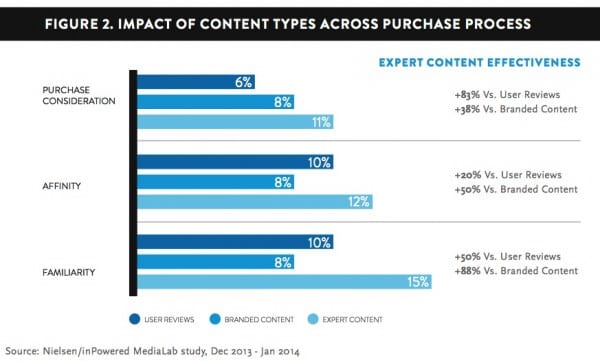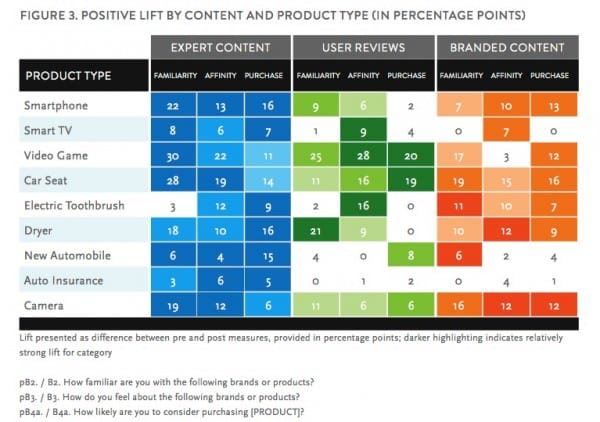New research shows how different types of content marketing supports brand engagement and purchase in different sectors
Value: [rating=4]
Recommended link: Download InPowered/Nielsen report
With the increasing focus on content marketing, it’s important for marketers to work out how effective different types of content are at different points in the buying process. This new research from Nielsen, commissioned by InPowered shows dramatic differences in the effectiveness of content types across sectors affecting these brand metrics:
- Stage 1: Familiarity with a new product
- Stage 2: Affinity toward a brand or product
- Stage 3: Purchase consideration of a brand or product
The research reviews three types of content, credible experts, third-party articles and user-generated content reviews. The importance of this type of content is shown from the statistic that 85% of consumers regularly seek out expert content - credible, third-party articles and reviews - for products they consider purchasing. The impact of content through the buying process is shown below.

It's clear that all three content types have a role, but Expert content is most influential. This is supported by this sector breakdown too.

I think the research shows the importance of blending different content types, since some consumer groups will prefer different content which they will seek out to inform their decision.
Methodology
I always take a look at the methodology on research, since the sample frame and size is so important in assessing the validity of research. Since this is Nielsen the research review seems well designed, but the recruitment approach was a new one to me:
"900 respondents were recruited off casino floors in Las Vegas, NV to participate in the experimental design at the Nielsen MediaLabs. Each respondent was identified to be in the target audience for the products in the content they would be exposed to. Respondents answered an online survey before and after the experience in order to measure the impact of the content on their familiarity, perceptions, and purchase consideration of the products".
Are this audience representative of consumers? They certainly have time on their hands, but their minds may be elsewhere?










